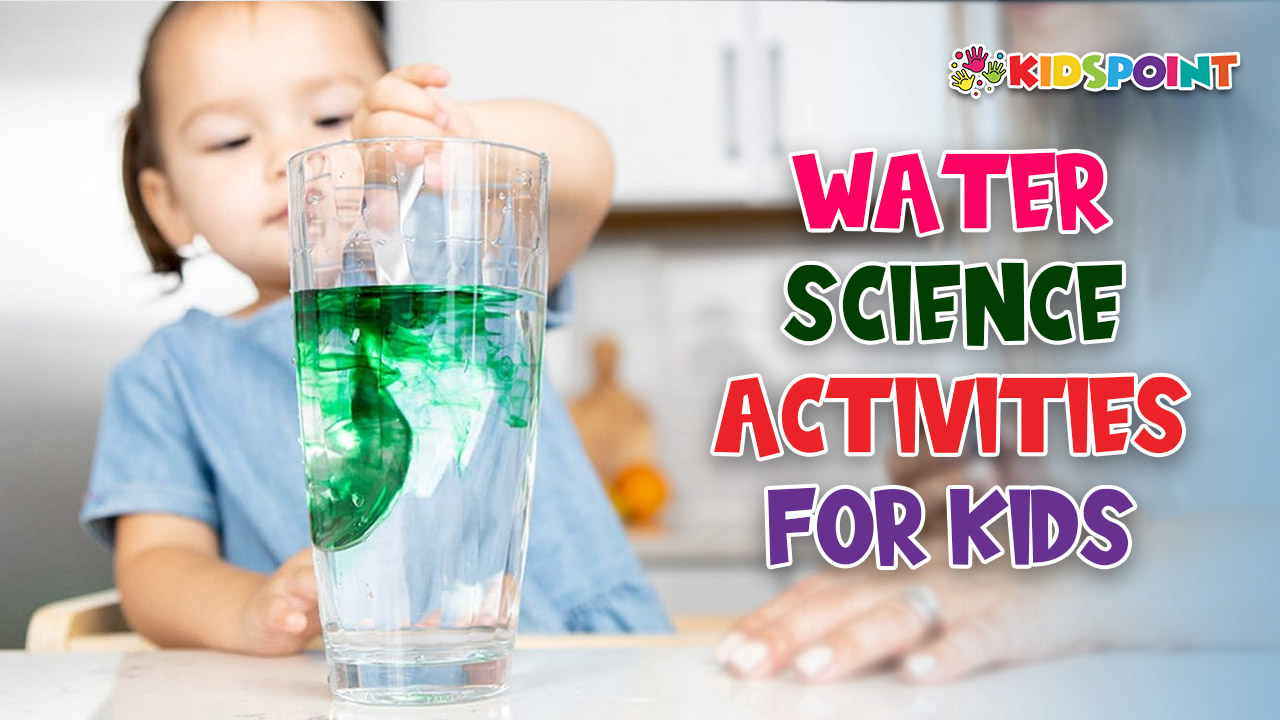Water is a fascinating substance that covers over 70% of our planet’s surface and is essential for life as we know it. Teaching children about the science of water not only educates them about an essential natural resource but also fosters a sense of curiosity and environmental stewardship. Engaging in hands-on water science activities can make learning about this vital substance both fun and educational for kids of all ages. In this guide, we’ll explore various water science activities designed to inspire wonder and understanding in young minds, brought to you by The Kids Point.
The Water Cycle
- Overview: The water cycle is a fundamental process that demonstrates how water moves through the environment, transitioning between different states (solid, liquid, gas).
- Activity: Create a Water Cycle in a Bag
- Materials: Ziplock bag, water, blue food coloring, tape, marker, sunlight.
- Procedure:
- Fill the ziplock bag with water.
- Add a few drops of blue food coloring to represent water.
- Seal the bag and tape it to a window where it can receive sunlight.
- Observe over the next few days as the water evaporates, condenses, and precipitates, mimicking the natural water cycle.
Density and Buoyancy
- Overview: Understanding density and buoyancy helps children comprehend why objects float or sink in water.
- Activity: Floating and Sinking Objects
- Materials: Various objects (e.g., coin, paperclip, cork, plastic toy), large container filled with water.
- Procedure:
- Predict whether each object will float or sink.
- Test each object by placing it in the water and observing its behavior.
- Discuss the concept of buoyancy and why certain objects float while others sink.
- Encourage children to hypothesize why each object behaves the way it does based on its density and shape.
Surface Tension
- Overview: Surface tension is the property of the surface of a liquid that allows it to resist external forces.
- Activity: Paperclip Floatation
- Materials: Bowl of water, paperclip.
- Procedure:
- Fill the bowl with water.
- Carefully place the paperclip on the surface of the water.
- Observe how the paperclip floats due to surface tension.
- Optionally, add dish soap to the water and observe how it affects surface tension.
Capillary Action
- Overview: Capillary action is the ability of a liquid to flow in narrow spaces without the assistance of external forces.
- Activity: Colorful Capillary Action
- Materials: White flowers with stems (e.g., carnations, daisies), food coloring, small cups, water.
- Procedure:
- Fill each cup with water and add a different color of food coloring to each cup.
- Trim the stems of the flowers at an angle.
- Place each flower in a cup of colored water.
- Observe over time as the flowers absorb the colored water through capillary action, resulting in vibrant hues.
Water Filtration
- Overview: Water filtration is the process of removing impurities from water to make it safe for consumption.
- Activity: DIY Water Filtration
- Materials: Plastic bottle, sand, gravel, cotton balls, activated charcoal, dirty water.
- Procedure:
- Cut the bottom of the plastic bottle and discard the cap.
- Layer the bottle with cotton balls, activated charcoal, gravel, and sand, in that order.
- Pour dirty water into the top of the bottle and observe as it filters through the layers.
- Collect the filtered water at the bottom and compare it to the original dirty water.
Ice Exploration
- Overview: Ice is the solid form of water and exhibits unique properties that can be explored through experimentation.
- Activity: Melting Ice Shapes
- Materials: Ice cubes, salt, food coloring, small containers.
- Procedure:
- Place an ice cube in each container.
- Add a few drops of food coloring to each container for visual effect.
- Sprinkle salt on one ice cube and observe how it affects the melting rate.
- Compare the melting patterns of the ice cubes with and without salt.
Water science activities, brought to you by The Kids Point, provide children with a hands-on learning experience that fosters curiosity, critical thinking, and environmental awareness. By engaging in activities that explore the properties and behavior of water, kids can develop a deeper understanding of this essential natural resource and its importance to life on Earth. Whether observing the water cycle, experimenting with buoyancy, or building DIY water filtration systems, there are countless opportunities for children to explore the wonders of water and ignite a lifelong passion for science and environmental conservation.


